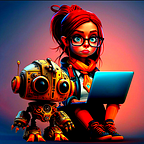Crafting Effective Learning: Key Ingredients for Engagement, Retention, and Skill Development
Understanding Learning: A Design Framework for Effective Learning Experiences (✔, , ⚙️)
Have you ever struggled to learn something new online? You watch videos and read articles, but sometimes they leave you wondering if you actually learned anything.
Many organizations invest time and resources into creating learning experiences to help people develop new skills. These experiences can range from short tutorials to in-depth courses, and the goal is always to make learning effective and engaging. (⚙️)
What makes a learning experience effective? (⚙️)
A good learning experience should achieve two main goals:
- Functional outcomes (⚙️) — Do people understand and use the skills or knowledge being taught?
- Emotional outcomes — Does the learning experience feel good and motivate people to keep learning?
How can we assess learning experiences? (⚙️)
There are several methods to assess how effective a learning experience is:
- Asking questions before and after — This can reveal changes in a learner’s attitude and confidence after going through the experience.
- Hands-on exercises — Learners put their new skills to the test by solving a real-world problem.
- Observing behavior — This involves measuring things like how long it takes people to complete tasks and how many mistakes they make.
Who can benefit from a design framework? (⚙️)
A design framework for learning experiences can be helpful for anyone who wants to create better learning opportunities. Here are some examples:
- Comparing different learning formats — Is a video tutorial more effective than a step-by-step guide?
- Testing prototypes — We can see how well a learning experience works before investing a lot of resources in it.
- Understanding different user groups — Does the learning experience work just as well for beginners and experienced users?
The Advantages of a Design Framework (⚙️)
A design framework provides a structured approach to creating learning experiences that are both informative and engaging. By understanding how people learn, we can design experiences that help them achieve their goals.
If you found this article helpful, attractive, useful and would like to support me, make sure to:
— — — — — — — — — — — — — — — — — — — — — — — — — — — — — — — — —
Authored by: [Niamh]
This collaborative research-driven exploration required [1] day of dedication and [2 to 3] hours of meticulous crafting.
Let’s get connected on Twitter: [@niamh_dcreator]
Thank you for your interest.
— — — — — — — — — — — — — — — — — — — — — — — — — — — — — — — — —
